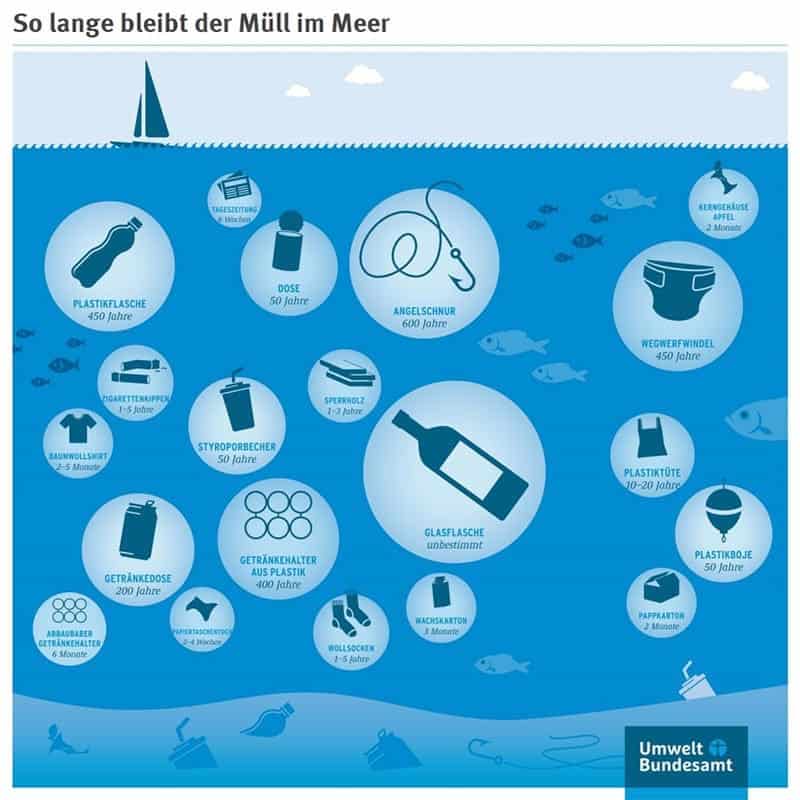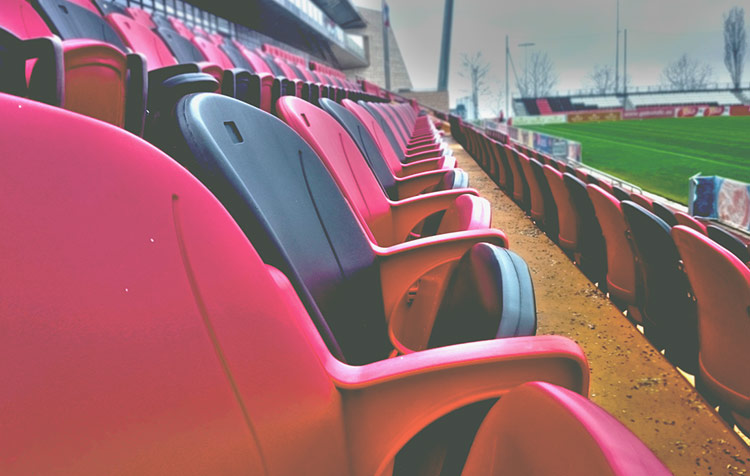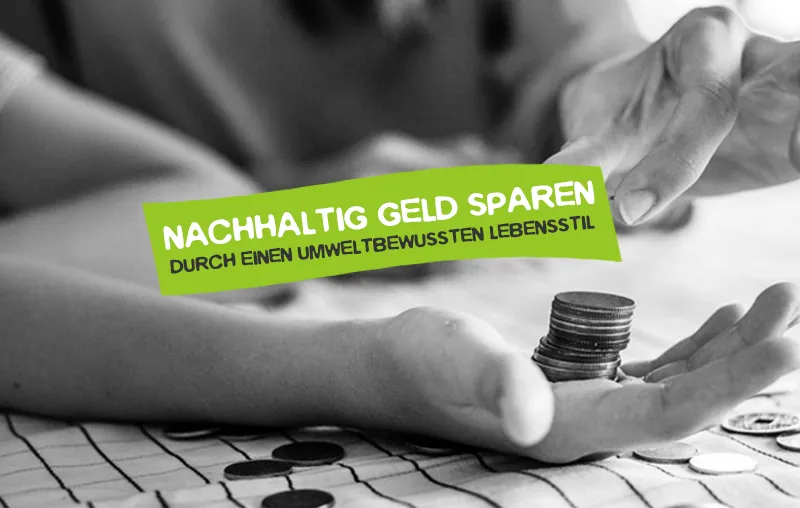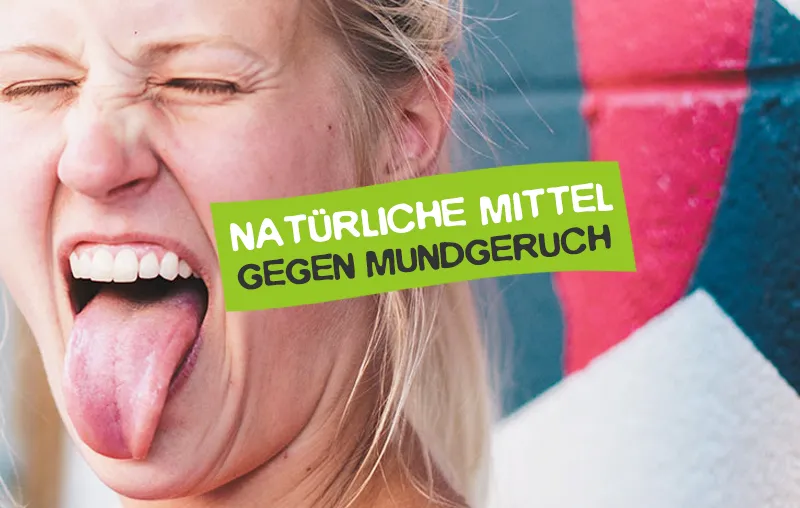What is plastic? A valid question that deserves an answer. Because we use plastic objects every day, and as I write this article about plastics, my fingers are hitting a plastic keyboard. We come into contact with plastic every day and it seems that plastic enhances our quality of life. But what is plastic actually? How is plastic made and what material is used to make plastic?
In this article I would like to answer these questions about plastic and also explain more about the advantages and disadvantages, plastic as an economic factor and environmental problem, as well as the recycling of plastic waste. You'll also learn why plastic is not just plastic. Let's go!
Here is a short table of contents of the article on plastics
- Production
- Forms features
- Advantages and disadvantages
- Economic factor
- Environmental problem
- Recycling
- Alternatives
- Conclusion
Plastic - production & history of plastic
In the days when plastic was still a thing of the future, milk was stored in glass bottles and large jugs and Wooden toothbrushes were part of the standard. In 1839, Charles Goodyear's combination of rubber and sulfur set the ball rolling for plastics production, which was unstoppable. Almost 100 years and a few development attempts later, plastic was then regularly rolling off the production line. While one million tons were initially produced worldwide in 1950, today we produce around 370 million tons of plastic every year.
With the development of the PET bottle at the end of the 1960s, plastic finally took off and really took off. So far, plastic is the only material that is light, break-resistant, elastic, temperature-resistant and, above all, can be produced in different degrees of hardness. As soon as a rudimentarily similar flexible, mass-produced and hopefully biodegradable material comes to light, plastic as we know it will become superfluous. But what is plastic actually? And how is plastic produced in the first place?

As many people know, plastic is made from the limited raw material petroleum. But until the finished plastic bottle, several more steps of plastic production are necessary.
- Crude oil is distilled and the valuable raw material for plastic Raw gasoline In addition to crude gasoline, other components of petroleum are produced in the form of gas, diesel, fuel oils and gasoil.
- Crude gasoline / napthta is replaced by the Cracking process to ethylene, propylene, butylene and other hydrocarbon compounds.
- Through Synthesis (polymerization, polycondensation or polyaddition), plastic can then finally be produced and shaped as desired.
So-called monomers are strung together and synthesized to form net- and chain-like molecules, the polymers. However, not all plastics are the same. Therefore, the selected manufacturing process or the desired end product determines what shape the plastic will later have.
The 3 types of plastic production
In order to be able to produce plastic bottles, dishwashing sponges and other items from plastic, therefore, with the help of Synthesis process several building blocks (monomers) are combined to form chains (polymers). The following 3 syntheses₁ are used to produce plastics:
Polymerization: Several small molecules are strung together to form one large molecule. The result of polymerization is, for example, the plastics polystyrene (PS), polypropylene (PP) and polyethylene (PE).
Polycondensation: In polycondensation, different starting materials are combined to form a molecule. In contrast to polymerization, a by-product is formed, e.g. water. Thermoplastics or thermosets are formed (see next paragraph: Forming plastics).
Polyaddition: Different starting materials are joined together by migration of hydrogen atoms without forming a by-product. One end product is polyurethane (PUR), for example.
The video explained it well once again. The choice of the synthesis process ultimately determines the characteristics of the subsequent plastic product. In the following paragraph, I would like to explain to you why not all plastics are the same and which characteristics distinguish plastics from each other.
Plastic molds - differences & features of plastic
Plastic means progress. Plastic helps us to be able to design things flexibly. Very flexible. Because plastic can be distinguished by many characteristics and can be designed as desired. For example, plastics can be distinguished by the following characteristics:
- Tensile strength
- Hardness / Density
- Elongation at break
- Dielectric strength
- Moisture absorption
- Temperature range
- Heat resistance
So far, plastic is the only material that is light, unbreakable, elastic, temperature-resistant and can be produced in different degrees of hardness. As soon as a rudimentarily similar flexible material that is suitable for mass production and hopefully biodegradable comes to light, it will make plastic obsolete. Such as polylactic acid (PLA for short), a bioplastic made from corn starch and sugar cane. But so far, there is no dedicated recycling system for plastics made from natural materials because of the small quantities involved. Soy, corn, sugar cane and the remains of shellfish have the potential to replace plastic in the long term.
The 3 forms of plastic
Basically, there are three different forms of plastic, which differ according to the characteristics mentioned. I'll give you an example of the plastic form so that you can better imagine it:
- Thermoplastics: This plastic mold is very flexible and can be changed into any shape by heating as often as desired. Thermoplastics consist of uncrosslinked polymers. (e.g. plastic cups)
- Thermosets: Kann nur einmal erhitzt und verformt werden und ist meist hart und spröde. Duroplaste bestehen aus engmaschig vernetzten Polymeren. Der Trabant wurde immer „Duroplast-Bomber“ genannt, vielleicht weißt du jetzt warum. 🙂 (Another example: socket housing)
- Elastomers: This is plastic that can be bent by hand and is very elastic. Elastomers consist of wide-meshed cross-linked polymers.(e.g. rinsing sponge)
To ensure that the plastic is really super-flexible after production, so-called additives are mixed in during the production of the plastic. These can be Plasticizer, colorants, stabilizers, flame retardants and many other things.
And these are the most important plastics at present:
- Polyethylene (PE): e.g. for beverage crates, buckets, bowls. Polyethylene is very difficult to break. Under adapted form, polyethylene has ideal film-forming properties is used especially for the production of packaging films, CD's or even books.
- Polypropylene (PP): e.g. for gas pedals, toilet lids, eyeglass cases. Polypropylene is a very hard, resilient plastic with a very low density.
- Polyvinyl chloride (PVC): e.g. for floor coverings and sewage pipes. Polyvinyl chloride is very resistant to aggressive acids and is basically hard and brittle.
- Polystyrene (PS): e.g. for insulation and packaging material. Polystyrene repels moisture and is better known as Styrofoam.
- Polyurethane (PUR): e.g. for textile fibers, mattresses. Polyurethane is a very elastic plastic that can be varied as desired by adding further chemicals.
- Polyethylene terephthalate (PET): e.g. for plastic bottles, computers, implants. Polyethylene terephthalate has high stiffness and is very hard.
Advantages and disadvantages of plastic (plastic)
Even though we argue against plastic very often here on the blog, the plastic has of course not only Disadvantages. It increases our quality of life and ensures that our cars consume less and the heat stays in our homes. Here I have compiled a small table with the advantages and disadvantages of plastic, which you are welcome to expand with a comment of this article.
| Advantages | Disadvantages |
| Flexible | Non biodegradable |
| Cost-effective | Substances hazardous to health (BPA, PVC, Phthalates) |
| Heat insulating | Combustible |
| Electrically insulating | Requires petroleum (limited raw material) |
| Enables fuel saving (car, plane, etc.) | Plastic waste problem in the environment |
| Reusable | Not scratch resistant |
| Easy | Can be attacked by organic solutions |
Plastic products - plastic as an economic factor
Plastic is incredibly important for the economy. Around 370 million tons of plastic are now produced every year. Plastic can currently still be procured cheaply and is used by companies not only for the products themselves, but also for product packaging. Cars can be made very light with the plastic, so that they have lower fuel consumption. Even airplanes are so light due to the plastic that they consume significantly less kerosene.
Renewable energy, such as wind energy, could also not be captured without plastic. Plastic has a massive impact on the economy. Of course, plastic manufacturers themselves are particularly resisting the emerging plastic-free movement and the penchant for natural living. Many companies can only be persuaded to put less plastic waste into circulation through controlled laws. Starting in 2019, the German government will introduce a new packaging law that will make companies more accountable in this regard.
Plastic in the environment - plastic as an environmental problem

Even if plastic is obtained from a natural raw material, the plastic is not biodegradable. Plastic does not rot. Exactly this property ensures that plastic has also caused an environmental problem. A plastic bottle remains in the ocean for at least 450 years until it decomposes into smaller Microplastics has decomposed. Above this paragraph, I have shown you a graphic₂ about the approximate decomposition time of things made of plastic.
That in a massive way Plastic waste into the environment is of little interest to the majority of companies. Profit is in the foreground. This greed for money, combined with a lack of education and weak recycling systems, has gradually created the biggest environmental problem of our time, next to climate change: Plastic waste in the sea. Every year, about 32 million tons of plastic waste are released into the environment, and 8 million tons of this plastic end up in the sea. Tendency rising. Especially for many developing countries in the Southeast Asian region, the plastic came too suddenly and has greatly increased the quality of life. When plastic was introduced, the entire world did not think about the consequences we are facing now.
There are many Aid projects against plastic waste and many people who are really active in combating plastic waste. On the one hand, we now have to eliminate the existing plastic waste, but on the other hand we have to get to the root of the evil. Because every individual has to question his handling or his consumption and know how to Avoid plastic waste can.
Plastics recycling
Here in Germany, about 90% of all plastic waste is collected again, but only 43% of it is actually recycled. More than half of plastic waste is incinerated in German waste incineration plants and not recycled. The reason why so much plastic is incinerated and not recycled is the higher profit of the disposal companies. If the disposal company takes the collected waste to the incineration plant, it earns better from it than if it takes the plastic waste for recycling.
The German government urgently needs to do something here to make recycling more attractive for the companies that are directly involved in the recycling process. Nevertheless, Germany is considered an absolute role model when it comes to the topic of Plastic waste recycling concerns. About 65 percent of municipal waste is recycled. A major problem for recycling companies are plastic items that consist of different plastic shapes. This makes it difficult to separate the plastic from one another.
Plastic alternatives and bioplastics
The bristles of the wooden toothbrushes from CareElite are made of charcoal and a Bioplastics which is biodegradable. So there are already many alternatives to the traditional plastic made from petroleum, but the recycling plants are not yet geared to the new plastics, so recycling is currently very laborious. So as mentioned earlier in the post, there are already some ideas and materials that have the potential to be a real and sustainable alternative to plastic. These include:
Polylactic acid (PLA)
Danone has already presented a yogurt cup made of PLA, which is 25% better than the production of conventional cups. Unfortunately, PLA can only be produced industrially and at high temperatures. Plants are needed for this. Cornstarch is already widely used (market share of 80%) for the production of Bioplastics used. Polymers can also be made from Sugar cane in the production of the new products. In Brazil, Braskem is the largest producer to date. Yeast fungi ferment the sap of sugar cane into ethanol. PLA can also be produced from beets.
Chitin
The natural polymer is a breakdown product in shellfish. Spiders, insects and crustaceans also have it in their shells. Chitin is proven to be biodegradable and holds great potential to eventually replace plastic.
Mycelium
The fungus can be grown regardless of location and climate and can be produced in an environmentally friendly way. This alternative to plastic can theoretically be grown anywhere, but research here is still in its infancy.
Sodium alginate
An Icelandic student experimented a bit with red seaweed and water and used it to develop a bottle that is sufficiently strong for storage and even edible. Since the bottle is made of natural materials, it decomposes after a short time.
Wheat and barley
Especially plastic rings from six-packs of beer or other drinks are a great danger for marine mammals and seabirds. An American company has therefore made these rings from wheat and barley, which animals can eat.
Straw
Does it have to be Styrofoam? No, pressed straw is just as insulating and even absorbs moisture. The project was started by the company Landbox.
Notice: Please drop me a comment if I have forgotten a plastic alternative. At Plastic alternatives from research you can find more information. By the way, besides the "real" alternatives, there are also ways to make existing plastic waste decompose faster. A researcher has discovered by chance that the Caterpillars of the great wax moth (Galleria mellonella) eat plastic and decompose an ordinary plastic bag in a short time. Another possibility is offered by the Bacterium Ideonella sakaiensis 201-F6. The bacteria preferentially eat the plastic PET and can help remove plastic from the environment.
Conclusion - What is plastic?
The invention of plastic has greatly enhanced our quality of life. While we use the Plastic advantages we did not have a clear view of the problems that plastic has brought with it over time. After all, plastic is not biodegradable and consumes petroleum, a resource that is limited for us. Now, every year, we bring about 32 million tons of plastic waste into the environment and especially into the oceans, which does not eliminate itself.
We have to learn how to use plastic in the best possible way. Because I, too, have no doubt that it enhances our quality of life. We just must not be so naive as to ignore the problems resulting from plastic. Otherwise we will have (see the article Plastic waste statistics), there will be about 3 times as much plastic in the oceans as there are fish by 2050.
Stay clean,

PS.: I have this worldwide Beach CleanUp group on Facebook ins Leben gerufen. Alle Mitglieder teilen ihre persönlichen Aktionen gegen den Plastikmüll in der Umwelt. Werde auch ein Teil davon! 🙂
References:
₁ Synthesis process at http://www.tis-gdv.de/tis/verpack/kunststo/bildung/bildung.htm
₂ Oliver Lüde / Museum of Design Zurich, ZHdK






A nice article and suitable to get an idea about the origin of the plastic problem. The development goes in the direction of plastics from renewable raw materials and in compostable plastics. Problems always occur when the quantities get out of hand. The enormous amount of cars led to well-known problems, which can only be tackled gradually (smog, noise). The increasing consumption of electricity led to the construction of nuclear power plants in many countries. But where to put the nuclear waste? And now plastic waste in the world's oceans. After all, alternatives to nuclear power have been found in Germany, as well as for gasoline. Plastic is not so easy to replace. You could limit the sale of plastic bags, disposable plastic tableware, The industry would have to participate financially in the elimination of plastic waste, through a fund. There is the CO2 tax. A plastic tax would therefore also be a way to limit the quantities produced.
Hello Thomas,
Thank you for your comment. Plastic can be replaced bit by bit, there are more and more alternatives for conventional plastic items. In the article Plasticfree lifestyle you will find many tips on this. Bans and taxes are needed, and the companies that bring plastic waste into circulation must also bear responsibility for it.
Stay clean,
Christoph
Hello Christoph,
I have a question. I have a cosmetic product here that definitely contains microplastics. However, the manufacturer states that his product is made without kerosene, silicone and mineral oils. Can this be true? I had equated mineral oil with plastic. Therefore, it is illogical to me if a product contains microplastics but is supposed to be mineral oil free. Am I making a mistake in thinking? On the bottle are other funny bla bla things like environmental and resource-conserving corporate philosophy and company X is committed to the welfare of Mesch and animals....
I am completely horrified and about to email the company but need this info....
Thank you in advance.
Hi Patrizia! Wow, that sounds unbelievably lousy.... It is of course not the same chemical name as microplastic, but consists of the verwenwandten raw material. But I'm not a chemist and therefore I can't give you a chemical explanation. You should contact the manufacturer in any case, because the product is obviously bullshit.
Hope I could help you further.
Many greetings
Christoph
Hello,
had just seen on the basis of a Rewe carrier bag that it was made from 2 PET bottles, among other things.
Da hatte ich mich direkt mal für das Thema interessiert! …Ja, hab früher im Chemie Unterricht oft „geschlafen“ 🙂
Hi Joon! Cool, stay tuned. Check out the article Zero Waste Lifestyle an, vielleicht ist geht da noch mehr für dich 🙂
Many greetings
Christoph
Comments are closed.